“Like A Village Having A Festival”
Interview with Thuli Mlambo-James
Hili Perlson, 2023
When curator Thuli Mlambo-James, Director and Founder of the Johannesburg, South Africa-based organization Ujamaa Arts, received an email inviting her to Berlin on behalf of Gallery Weekend, her initial thought was that it was a scam. “I guess people reflect where they live, and I live in a country in which it’s possible for something like this to happen. You get an email saying you’ve been selected for something, just transfer money here…” she tells me over video call. Mlambo-James, who founded Ujamaa Arts in 2018 to bring more visibility to emerging artists, was also the co-curator of the South Africa Pavilion at the 59th Venice Biennale, in 2022. Past the initial surprise at being invited by people she had never met, she realized that she actually did have a connection to a Berlin gallery: Eigen + Art, with whom she began a conversation about a future collaboration after gallerist Judy Lybke saw the South Africa Pavilion in Venice. “I thought it was actually a smart move because I guess they wanted to continue the conversation.” Thankfully, Mlambo-James accepted the invitation, and spent several action-packed days visiting exhibitions with a group of some 20 international curators and art writers. I caught up with the self-described “emerging curator” via Zoom to find out what impressions she took with her from her first-ever Gallery Weekend Berlin.
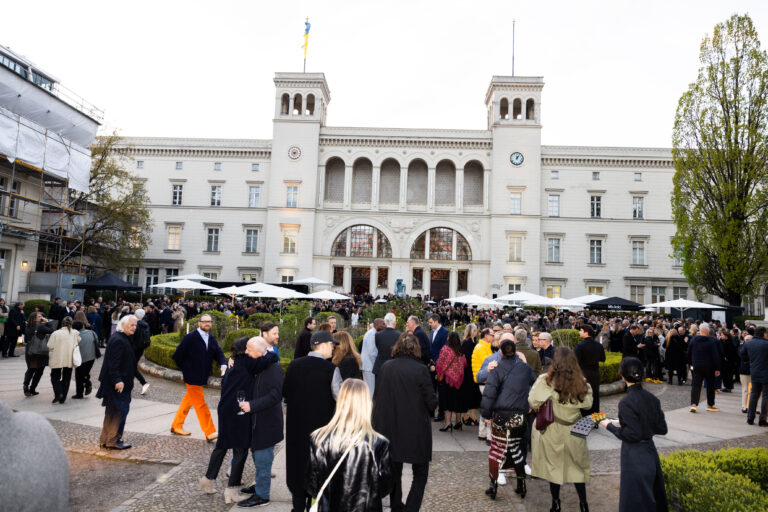
Gallery Weekend Berlin Dinner 2023 im Hamburger Bahnhof Berlin 29.04.2023 © Clemens Porikys
Was this your first visit to Berlin?
Thuli Mlambo-James: Yes, it was my first time and it was beautiful but short. I’m traveling on a South African passport and only got a visa for seven days so I couldn’t stay long. I would have loved to stay and visit other institutions and go back to some galleries. Also, I want to point out that in our group, there were more women invited than men, which I thought was very progressive, in terms of opening opportunities to females in the arts industry.
What are other things that left a lasting impression on you?
Out of all the exhibitions I saw, there were three that really stood out. Certainly the one by Chinese multimedia artist Cao Fei at Sprüth Magers. It really stood out, especially after seeing so many exhibitions. And I’d never seen her work before! I enjoyed the fact that it was very interactive and it actually gave me time to think and focus on the future of the art world.
In what way?
At the moment, some of us haven’t been woven into the Metaverse, in terms of the curatorial aspect of the art world. I personally haven’t thought that far in terms of curating digitally. So attending this exhibition made me think deeply about one’s future in the art industry, as a curator, and catching up with where the world is going in terms of digital art.
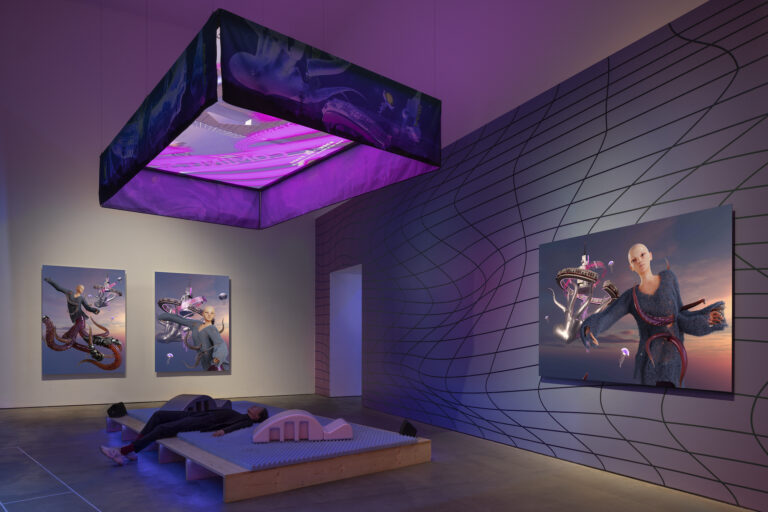
Cao Fei, Duotopia, Installation view, Sprüth Magers, Berlin, April 29–August, Photo: Timo Ohler
How does that relate to your focus as a curator? What questions do you deal with in your curatorial work?
I focus on more social issues. During GWB, I actually created a small show with the Mental Health Art Space in West Berlin. I was introduced to the space through my university. I’m studying remotely with Node Center for Curatorial Studies, and my professor An Paenhuysen introduced me to the founder Kathy-Ann Tan because the space’s work relates to my thesis, which is on the suffering of the Black body, and especially the Black female body. I curated a show based on an artist called Palesa Ndlovukazi Sibiya, a South African performance artist who suffered a lot of gender-based violence. She was doing her MA in Dramatic Arts in Johannesburg, and tragically, she committed suicide last year. She’d been asking me for years to manage her work, but at the time I wasn’t confident enough to deal with performative arts. Having done this program with Node gave me the confidence to speak of her work. We did a screening and a talk, but the bigger plan is to have a show in Berlin next year, ideally in a bigger space and also involve maybe other institutions and experts in mental health and performance artists. And have a conversation around that, and around how to support each other. Also, I just discovered that May is a mental health month, so it could actually coincide with GWB next year.
That brings me to the beginnings of GWB, which is actually a format that grew out of Berlin’s gallerists joining forces and pooling resources to create an alternative mode of attracting audiences and collectors to Berlin.
Actually, I did feel that spirit. It felt like a village having a festival, where everyone’s interconnected. People were interested in finding out our opinions about the shows. You don’t feel that when you go to art fairs. There’s that whole desperation where galleries are trying to sell work, whereas here it was more conversational and making sure that people understand the work. I think it’s really a format that gives space. First of all for the galleries to show their own program in their own spaces as opposed to going to a fair, but also to really engage on a different level.
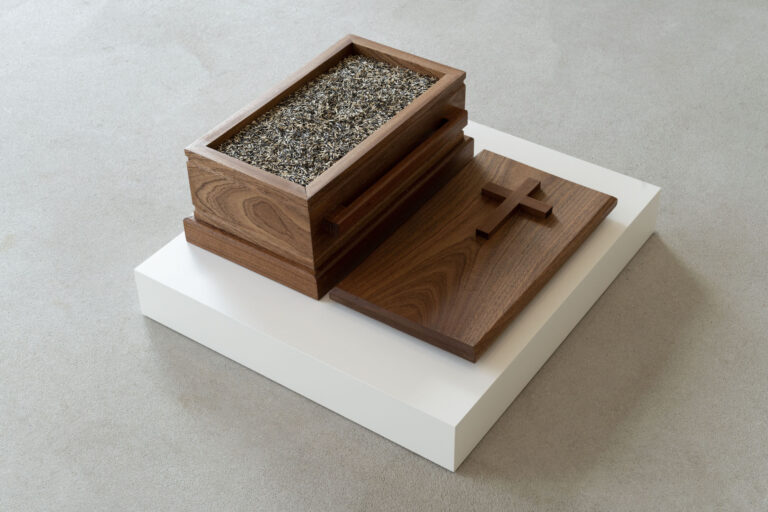
Rhea Dillon, Incomprehensible Sex Coming To Its Dreaded Fruition; nothing remains but Pecola & the Unyielding Earth, 2023. Photograph by Joanna Wilk. Courtesy of the artist and Sweetwater, Berlin
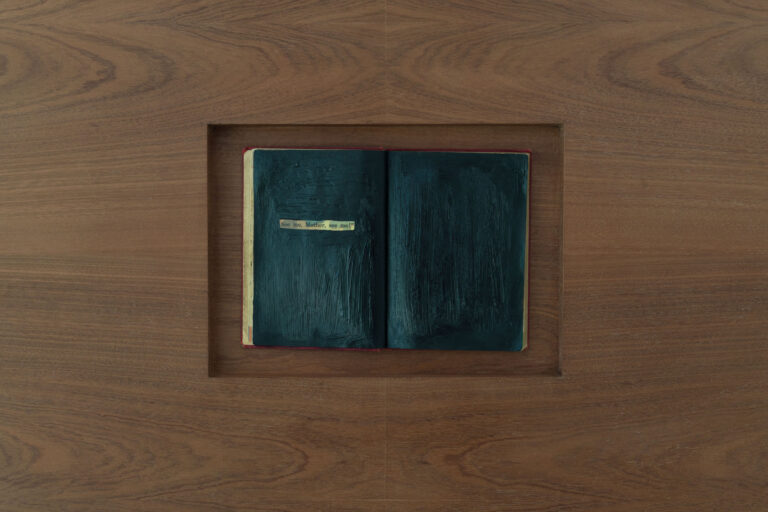
Rhea Dillon, Pretty eyes. Pretty blue eyes. Big blue pretty eyes. / Run, Jip, run. Jip runs, Alice runs. Alice has blue eyes. / Jerry has blue eyes. Jerry runs. Alice runs. They run / with their blue eyes. Four blue eyes. Four pretty / blue eyes. Blue-sky eyes. Blue-like Mrs. Forrest’s / blue blouse eyes. Morning-glory-blue-eyes. / Alice-and-Jerry-blue- (detail), 2023. Photograph by Joanna Wilk. Courtesy of the artist and Sweetwater, Berlin
You mentioned earlier that there were three shows that stuck with you. Besides Cao Fei, what were the other two highlights for you?
Rhea Dillon, the UK-based multidisciplinary artist, poet and writer at Sweetwater. What interested me also was her subject matter, and how she focuses on examining the roles of representation of Blackness, which is also where my curatorial interest lies. The exhibition is based on Toni Morrison’s novel The Bluest Eye, so I really enjoyed that. Out of all the shows, I think that one was more sobering, and very well curated. And the third show was Hito Steyerl at Esther Schipper Gallery. That was the first exhibition we saw. The darkened room filled with video projections was fascinating, and I didn’t know her work before but when I walked in, seeing those flowers in the round hanging jars, the first thing I thought of was something to do with environment, climate crisis, and nature, so the immediate reaction it created was very impactful. It operated for me on a very aesthetic immediate reaction. It’s very inviting, it created a very thought-through experience of the space.
Is that also something of a focus in your work, the way a space is being narrated?
I strive to work like that because I feel as if art is not only visual, it’s only experiential. You need to feel it, and white-cube spaces tend to be boring after a while. It should be fun, you should feel excited to engage with the work. South Africa is a developing art market, especially with the new Black middle class that travels a lot. They have been exposed to the culture of going to galleries, buying art. And it’s this kind of art that gets people in the galleries.
Further Reading: The world of Afrofuturism and the artists shaping it by Thuli Mlambo-James and Tom Flanagan
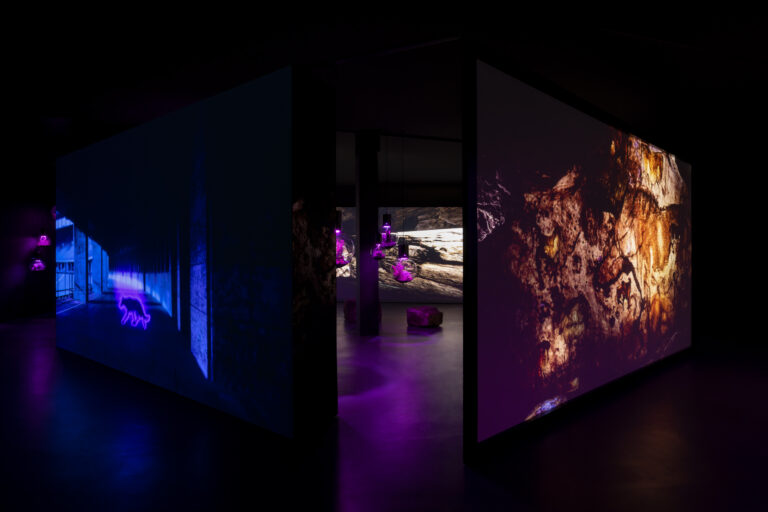
Hito Steyerl, Animal Spirits, 2022. Exhibition view: Hito Steyerl, Contemporary Cave Art, Esther Schipper, Berlin, 2023. Courtesy the artist, Andrew Kreps Gallery, New York, and Esther Schipper, Berlin/Paris/Seoul. © The artist / VG Bild-Kunst, Bonn 2023. Photo © Andrea Rossetti
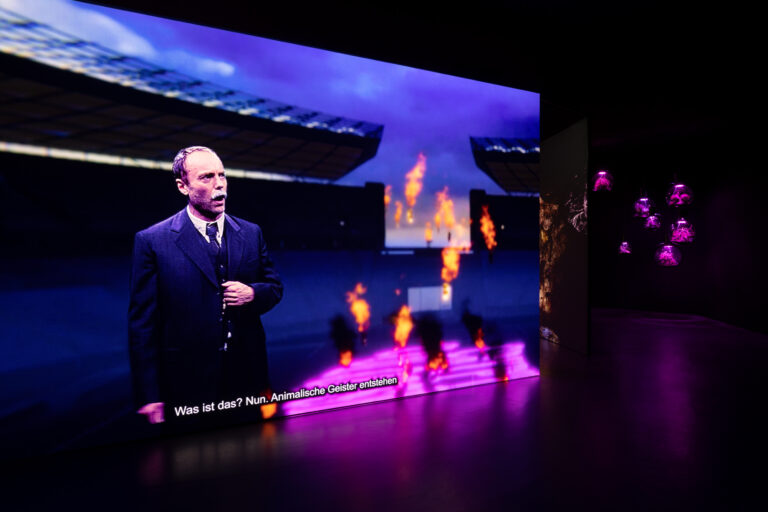
Hito Steyerl, Animal Spirits, 2022. Exhibition view: Hito Steyerl, Contemporary Cave Art, Esther Schipper, Berlin, 2023. Courtesy the artist, Andrew Kreps Gallery, New York, and Esther Schipper, Berlin/Paris/Seoul. © The artist / VG Bild-Kunst, Bonn 2023. Photo © Andrea Rossetti
